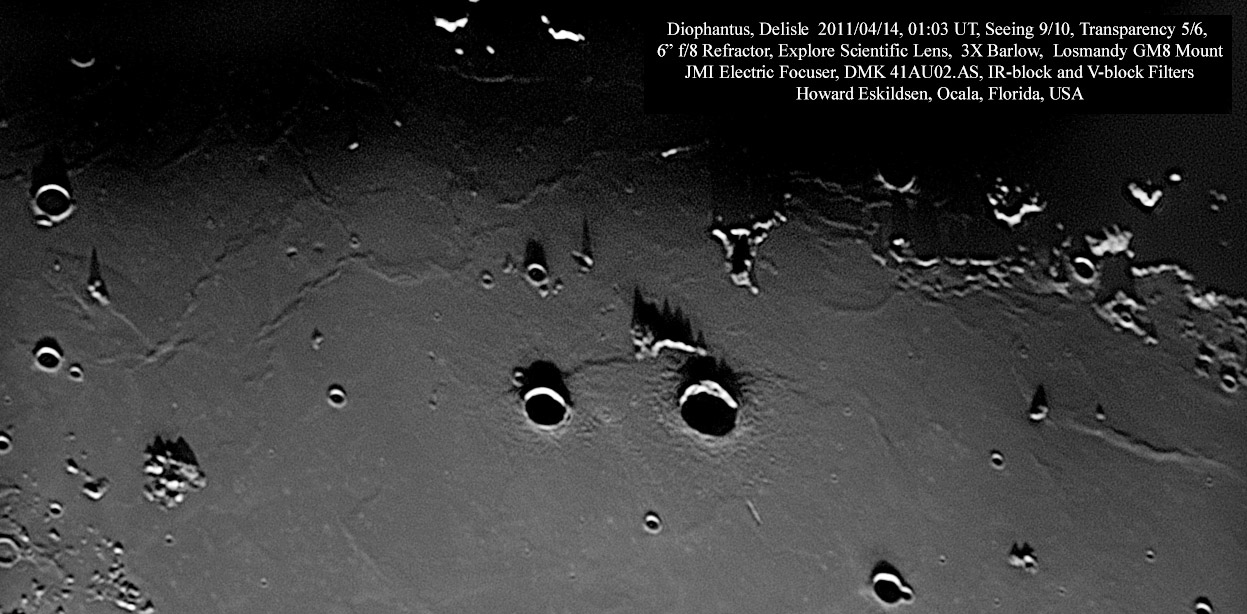Difference between revisions of "June 5, 2011"
| Line 21: | Line 21: | ||
Rükl plates [http://the-moon.wikispaces.com/R%C3%BCkl+9 9] & [http://the-moon.wikispaces.com/R%C3%BCkl+19 19]<br /> | Rükl plates [http://the-moon.wikispaces.com/R%C3%BCkl+9 9] & [http://the-moon.wikispaces.com/R%C3%BCkl+19 19]<br /> | ||
<br /> | <br /> | ||
| + | <p><b>Yesterday's LPOD:</b> [[June 4, 2011|Oniric Metamorphosis]] </p> | ||
| + | <p><b>Tomorrow's LPOD:</b> [[June 6, 2011|Where Has the Earthshine Gone?]] </p> | ||
<hr /> | <hr /> | ||
Revision as of 11:59, 7 February 2015
West Side Story

north to the right image by Howard Eskildsen, Ocala, Florida
I admire Howard's imaging. He relentlessly uses his standard size amateur telescope to image the nearside
under a variety of illuminations. This near terminator view reveals an area I've seldom seen with this lighting.
And each different view elicits different observations and understandings. Just above Delisle is a mountain
informally known as the Baby. That is what the very serious scientist Gerard Kuiper called it, seeing it as a
big-headed child crawling to the south. But with this illumination it looks more like a baby stegosaurus. Near
the left edge of the image is the circular mass of hills called Mount Vinogradov, with Brayley appearing to the
upper left. Between Brayley and Vinogradov is a small hill casting a long tapered shadow. The hill seems to
be on an elongated mare swell with a bright ridge that extends the lineation of the hill. Finally, to the right of
the hill are two mare ridges - the slightly more conspicuous one is Arduino - that probably mark the faint
continualtion of the Apennine Ring along the west side of the Imbrium Basin.
Chuck Wood
Related Links
Rükl plates 9 & 19
Yesterday's LPOD: Oniric Metamorphosis
Tomorrow's LPOD: Where Has the Earthshine Gone?



